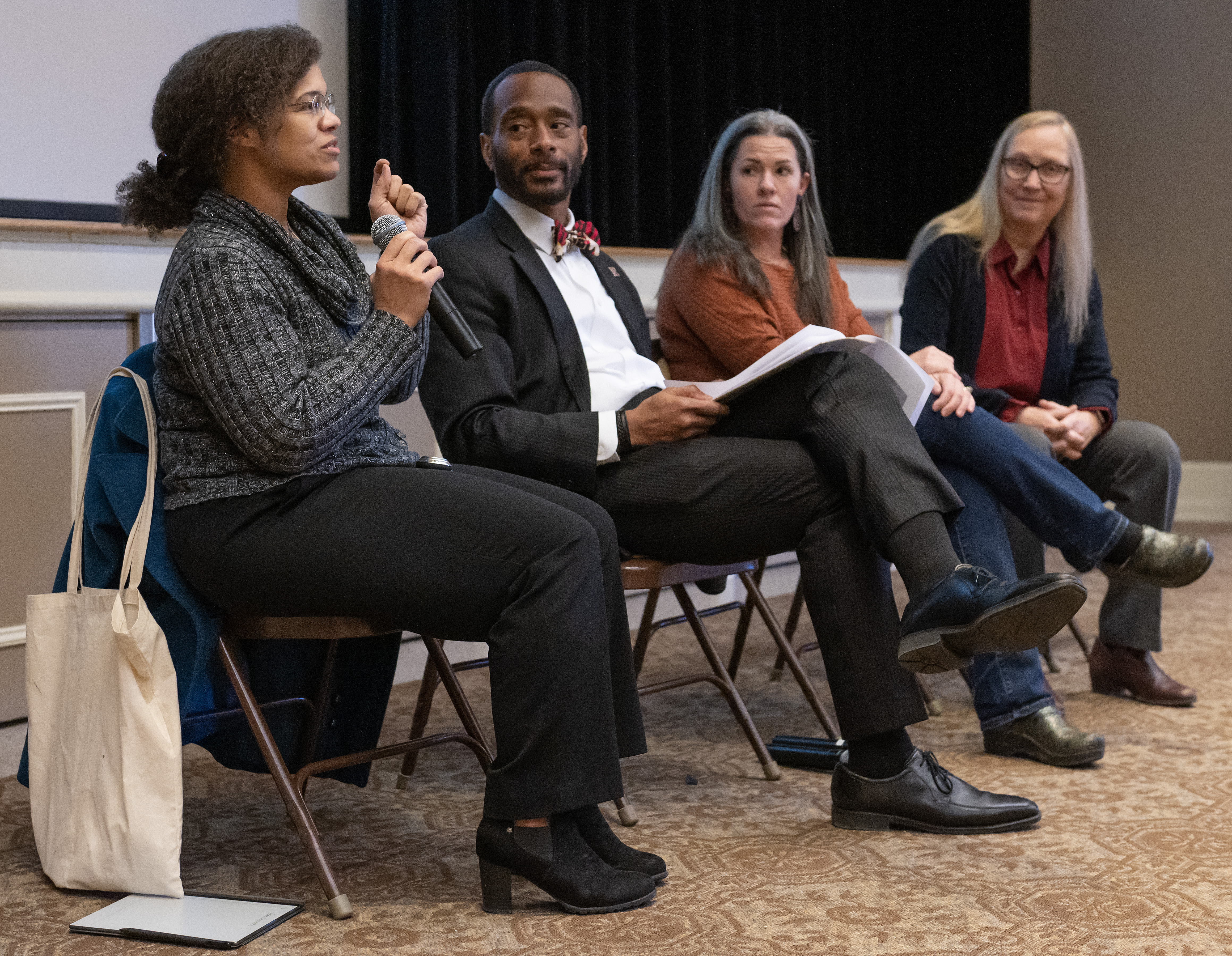The first Campus Conversation of the spring semester was tied into a yearlong commemoration, "Rising from the Ashes: A Century of Innovation."
On Jan. 18, 1923, Elon College flirted with vanishment. A catastrophic fire destroyed the institution’s main administration building along with student records, books and furnishings.
Such an event might have meant the end for many small-town, low-enrollment colleges. At Elon, students, faculty and staff assembled less than five hours after the early morning fire in a first step toward creating what was later called a “building plan … for the next hundred years.”
That same month but nearly 600 miles south, a small town in Florida, Rosewood, was decimated by a much more dire situation. Rosewood had been the scene of a week-long racially-charged massacre in early January 1923 that took the lives of eight people. Some eyewitness testimonies account for upward of 150 deaths.
There was not any rebuilding in the case of Rosewood. The self-sufficient town of 355 residents and profitable timber mills was razed completely, leaving only a general store owned by a white Rosewood citizen, John Wright, who provided shelter for Black residents during the massacre. After the attacks, the town was abandoned by Black residents and none returned. Many Black residents retreated to the surrounding swamps and then settled elsewhere.
The story of Rosewood, how it can be remembered through Elon’s classrooms and a larger discussion of resilience was the focus of the first Campus Conversations event of the spring semester on Friday, Feb. 3, as part of Elon University’s year-long commemoration of the fire of 1923 and the innovation and resiliency that followed. Campus scholars provided context for the Rosewood Massacre and how they connect the massacre to their teaching.
For Jessica Carew, associate professor of political science and policy studies and assistant director for diversity, equity and inclusion in the political science curriculum, it’s useful to think of the “potential parallels” between what happened on Elon’s campus and Rosewood — both occurring in January 1923 in the rural South and involving a devastating fire.
However, the similarities stop there, Carew said. While Elon had the support of its community to rebuild itself, better and grander, the residents of Rosewood were not given a similar opportunity. As Elon’s surrounding community bolstered it for a century of innovation, Rosewood’s neighbors torched it into 100 years of squalor, she noted.
As a part of the university making advancing equity requirements, Heather Barker, assistant professor of mathematics and statistics, has implemented ideas of social inequity into her introductory statistics course. Using statistical models analyzing the correlation of racial violence during the early 20th century, Barker aims for her students to explore these models and discover how the original resources discovered those comparisons.
Assistant Professor of Journalism Lorraine Ahearn hopes to “use journalism to restore what journalism erased.” Ahearn noted that communications scholars argue that journalism should be looked at as a form of public memory, not as a statute cast in stone.
Following insights from the faculty panel on how the Rosewood Massacre will influence their teaching going forward, Randy Williams, vice president and associate provost for Inclusive Excellence, and Naeemah Clark, J. Earl Distinguished Professor of cinema and television arts, led a group discussion for the faculty and staff in attendance.
This Campus Conversation was a part of a yearlong commemoration of the 1923 fire — Rising from the Ashes: A Century of Innovation. The next event scheduled to honor the fire and the century of resilience which followed is the “1923-2023: A Century of Innovation” discussion on Tuesday, Feb. 28 in McKinnon Hall at 7 p.m. A panel of Elon community members will discuss how the university has championed innovation through admissions, sports, student life and other avenues.
For the full list of 1923 Fire Centennial Observances, visit the 1923 Commemoration webpage.



